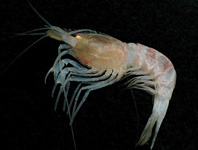Abstract
Synkrotima tsalakpmenoi sp. nov. is described from material collected in Zimbabwe and Kenya. This species presents the following characteristics: notogastral integument formed by longitudinally aligned cuticular cords; thick, lanceolate notogastral setae; and genital neotrichy. Synkrotima tsalakpmenoi sp. nov. is compared to S. zimbabwae. Congocepheus thailandae sp. nov. is the first species of this genus described from Thailand, with the following present: large finger-like notogastral projection; notogastral setae c1, c2, da, dm, dp, la, lm, lp, h1, h2 situated on promontories; setae c1, c2 located adjacent and parallel.
A complementary study of Cavaecarabodes hauseri, making use of Scanning Electron Microscopy (SEM), allows for clarification of particularities regarding complex setae as well as some aspects of the integument, and provides a more detailed diagnosis.
References
Evans, G.O. (1992) Principles of acarology. C.A.B International, Cambridge. Wallingford (UK). 563 pp.
Fernandez, N., Theron, P. & Rollard, C. (2013a) The Family Carabodidae V. The genus Congocepheus (First part), with redescriptions of Congocepheus heterotrichus Balogh, 1958, Congocepheus orientalis Mahunka, 1987 and Congocepheus hauseri Mahunka, 1989. International Journal of Acarology, 39 (8), 600–614.
http://dx.doi.org/10.1080/01647960.2013.858747
Fernandez, N., Theron, P., Rollard, C. & Tiedt, L. (2013b) The family Carabodidae (Acari: Oribatida) V. The genus Congocepheus (second part), with a redescription of Congocepheus involutus Mahunka, 1997, and descriptions of Congocepheus gabonensis and Congocepheus extactastesi sp. nov. Zoosystema, 35 (4), 587–609.
http://dx.doi.org/10.5858/z2013n4a8
Fernandez, N., Theron, P., Rollard, C. & Rodrigo Castillo, E. (2014) Revision of the family Carabodidae (Acari: Oribatida) V (third part). Redefinition of Congocepheus, definition of Cavaecarabodes gen. nov. and descriptions of three new species, Congocepheus germanicus sp. nov., Cavaecarabodes pulchritude gen. nov., sp. nov., and Cavaecarabodes anouchkae gen. nov., sp. nov. International Journal of Acarology, 40 (7), 595–585.
http://dx.doi.org/10.1080/01647960.2014.959059Fernandez, N., Theron, P. & Leiva, S. (2016) Revision of the family Carabodidae (Acari, Oribatida) V. Fourth part. Two new species of the genus Congocepheus from the Republic of Rwanda: Congocepheus rwandensis sp. n., and Congocepheus kayoveae sp. n. Zookeys, 586, 19–41.
https://doi.org/10.3897/zookeys.556.7011Fernandez, N., Theron, P. & Leiva, S. (2016) Revision of the family Carabodidae (Acari: Oribatida) XI. Congocepheus kardiae sp. nov. and Zimbabweae pluosiae gen. nov., sp. nov. from the Republic of Zimbabwe. International Journal of Acarology, 42 (7), 341–357.
http://dx.doi.org/10.1080/01647954.2016.1199138Fernandez, N., Theron, P. & Leiva, S. (2017) Revision of the family Carabodidae (Acari: Oribatida) V (Fifth part). Redescription of Congocepheus latilamellatus Mahunka 1984, with complementary studies of C. ornatus, Mahunka 1983. Descriptions of Tanzaniacepheus gen. nov. and Zimbabwecepheus gen. nov. Zootaxa, 4324 (2), 315–330.
https://doi.org/10.11646/zootaxa.4324.2.5Fernandez, N., Theron, P., Leiva, S. & Tiedt, L. (2017) Revision of the family Carabodidae (Acari: Oribatida) XIII. Congocepheus camerunensis sp. nov. and Synkrotima zimbabwae gen. nov., sp. nov. from the Republic of Zimbabwe. Systematic & Applied Acarology, 22 (11), 1822–1842.
http://dx.doi.org/10.11158/saa.22.11.4Grandjean, F. (1958) Observation et conservation des très petits Arthropodes. Bulletin de Muséum d’Histoire Naturelles, Paris, 21 (2), 363–346.
Krantz, G. & Walter, D. (2009) A manual of acarology. 3rd ed. Texas Tech University Press. Lubbock (TX). 807 pp.
Mahunka, S. (1987) Neue und interessante Milben aus dem Genfer Museum LX. Oribatids from Sabah (East Malaysia) II. (Acari: Oribatida). Revue suisse de Zoologie, 94, 765–817.
Mahunka, S. (1989) New and interesting mites from the Geneva Museum LXV. Oribatids of Sumatra (Indonesia) I (Acari: Oribatida). Revue suisse de Zoologie, 96, 433–459.
Norton, R. & Behan-Pelletier, V. (2009) Suborder Oribatida. In: Krantz GW, Walter DE (eds.) A manual of acarology. 3rd ed. Texas Tech University Press. Lubbock (TX). p. 430–594.
Travé, J. & Vachon, M. (1975) François Grandjean 1882–1975 (Notice biographique et bibliographique). Acarologia, 17 (1), 1–19.

